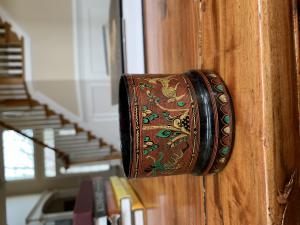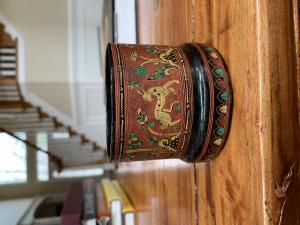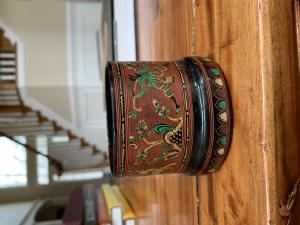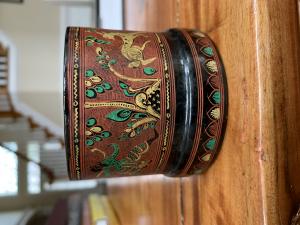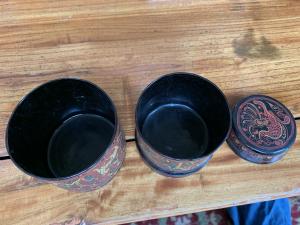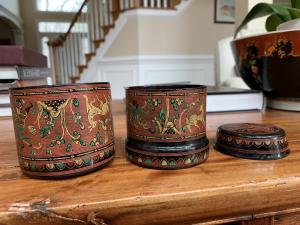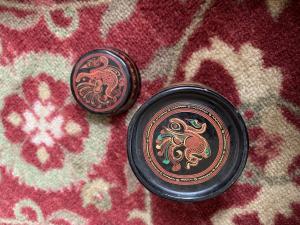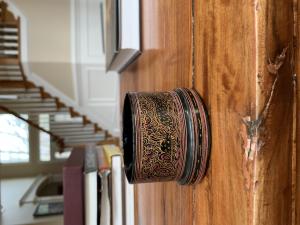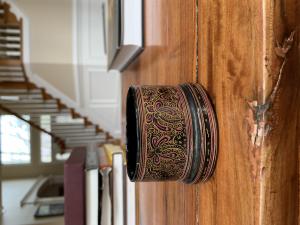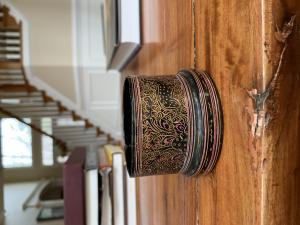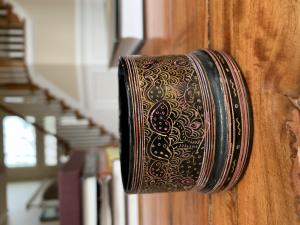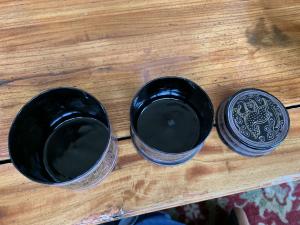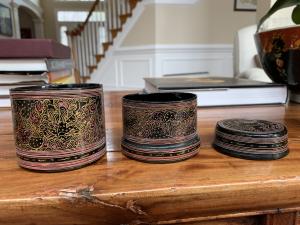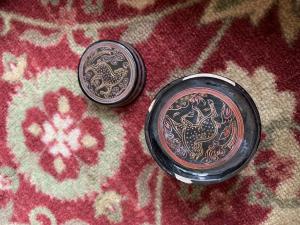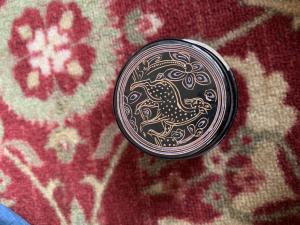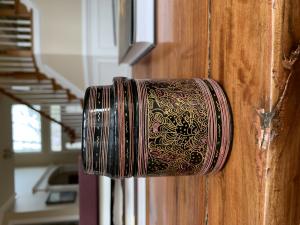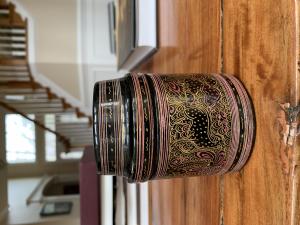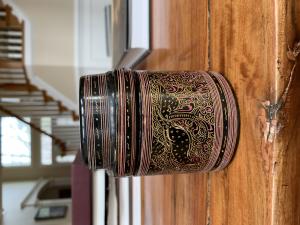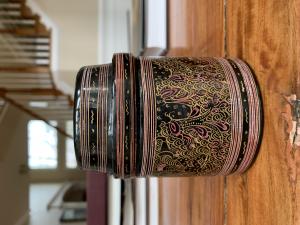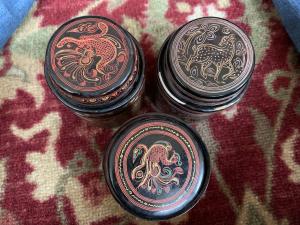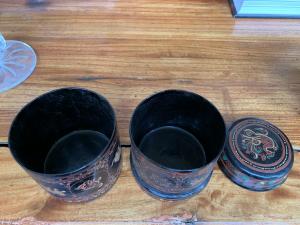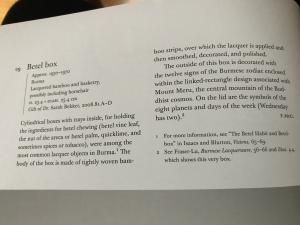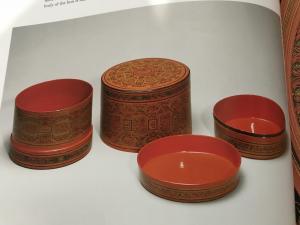Burmese Betel Boxes
Box / Container
A set of three cylindrical boxes with various geometric and animal motifs incised on the sides, lid, and bottom. The boxes have a deep hatbox style lid fits snugly over the high-sided container, which holds one fitted tray inside. The inside of the vessels is black, and the outside has intricately incised designs mainly in black, cinnabar, and a bit of green and yellow. The three motifs decorating each box include (1) dancing human figure with flora and fauna, (2) various animals enclosed in circles with decorative tendrils, and (3) forest-like motifs with deer.
Date: late 19th- early 20th century
Date: late 19th- early 20th century
Betel boxes, also called kun-it, are cylindrical vessels with trays inside used to store ingredients used in betel chewing. Betel-chewing is a leisure pastime practiced since ancient times in many parts of south and southeast Asia. It involves wrapping areca nut, slaked lime, and other ingredients in a betel leaf to make a quid or small package that is chewed to create a mild stimulant effect. Betel-chewing was common in Thailand through the early 20th century but is now a disappearing tradition.
Each betel box has four parts, a tall base container, two internal trays, and a deep lid. The outside of the box is heavily decorated and can depict scenes of the Ramayana, and an epic from the late Vedic age of ancient India (twelfth to tenth centuries BCE). The trays typically held ingredients such as betel vine leaf and even sometimes spices or tobacco. The ingredients for the betel quid were kept in sets of containers of various materials and forms. The wealthiest had sets of silver or gold crafted with elaborate designs to delight the eye; during the 19th century and earlier, sets were also markers of rank and status. Bronze was much more commonly owned. Lacquer-ware containers for betel were also made in northern Thailand and neighboring Burma.
As in many Southeast Asian cultures, betel became a signifier of social status and likewise the betel box. In Burma, royal gifts of betel were made to favored guests. Furthermore, betel boxes were a key element of the hospitality process surrounding the chewing of betel, and this one made an impressive display when spread out on a low table so guests could select their preferred ingredients. The preparation and chewing of betel played an important part in the social and ritual life of the Burmese. Furthermore, most Burmese owned a range of betel boxes of different sizes. These boxes were among the most common lacquered objects produced in Burma.
Each betel box has four parts, a tall base container, two internal trays, and a deep lid. The outside of the box is heavily decorated and can depict scenes of the Ramayana, and an epic from the late Vedic age of ancient India (twelfth to tenth centuries BCE). The trays typically held ingredients such as betel vine leaf and even sometimes spices or tobacco. The ingredients for the betel quid were kept in sets of containers of various materials and forms. The wealthiest had sets of silver or gold crafted with elaborate designs to delight the eye; during the 19th century and earlier, sets were also markers of rank and status. Bronze was much more commonly owned. Lacquer-ware containers for betel were also made in northern Thailand and neighboring Burma.
As in many Southeast Asian cultures, betel became a signifier of social status and likewise the betel box. In Burma, royal gifts of betel were made to favored guests. Furthermore, betel boxes were a key element of the hospitality process surrounding the chewing of betel, and this one made an impressive display when spread out on a low table so guests could select their preferred ingredients. The preparation and chewing of betel played an important part in the social and ritual life of the Burmese. Furthermore, most Burmese owned a range of betel boxes of different sizes. These boxes were among the most common lacquered objects produced in Burma.
Height: 4”
Width: 3”
Depth: 3”
inches
Bali
Myanmar (Burma)
The body of the box is made of tightly and finely woven or plaited bamboo strips. Up to fifteen layers of lacquer are applied to them, then smoothed, decorated, and polished. The tinted lacquer is usually made with the sap from the Melanorrhoea usitata tree. Traditionally, they are decorated with motifs and designs associated with the Burmese zodiac signs, Mount Meru, and other Buddhist symbols. The decorations on the lid are usually duplicated on the sides and the separated components. Typically, a lacquer master (yun hsaya) oversaw quality control and training in the workshop.
Burmese

